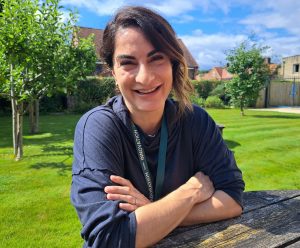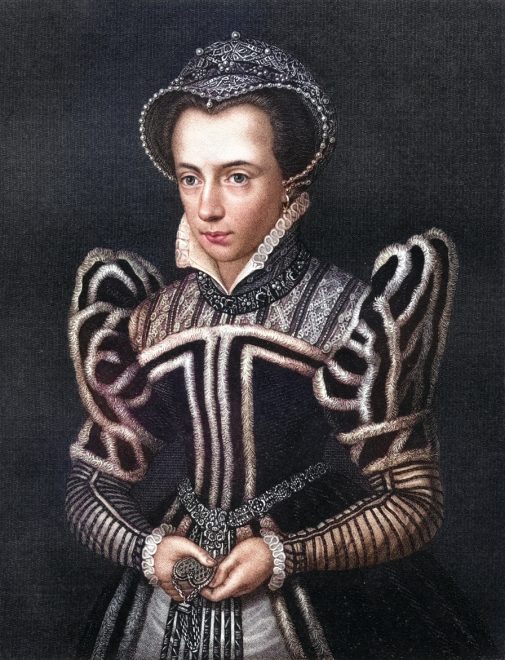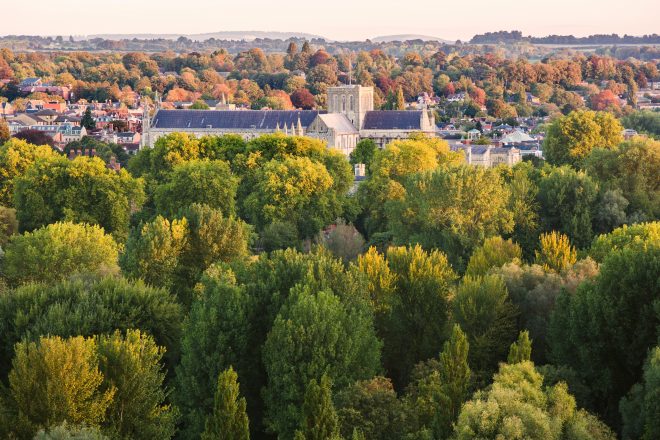History special: Why did Queen Mary I come to the South Downs?
July 29, 2024
 What is the link between Queen Mary I of England and the South Downs? Anooshka Rawden, Cultural Heritage Lead for the National Park, explains in this illuminating article.
What is the link between Queen Mary I of England and the South Downs? Anooshka Rawden, Cultural Heritage Lead for the National Park, explains in this illuminating article.
The South Downs landscape has witnessed many historical events. One of which was the procession of a queen to a controversial wedding…
After a life that had involved triumph, tragedy and loss, including being barred from seeing her mother, repeated periods of ill health and a declaration of illegitimacy, Mary I became queen of England in 1553 after the triumphant defeat of John Dudley, Duke of Northumberland, who had attempted to established Lady Jane Grey as successor to Edward VI.
Mary, aged 37, was to ride into London in August 1553 officially as Queen, and more so, as queen regnant, or queen in her own right. She had been backed by Catholics and Protestants, people whose loyalty was to the settlement outlined in her father’s will. However, her immediate actions on becoming queen indicated a strong mission to reverse the Protestant policies of her half-brother, and despite a proclamation to calm fears and religious tensions by stating that people would not be compelled to follow Catholicism, her actions focused on the reinstatement of Catholic churchmen and the enforcement of Catholicism. Although history has not been kind to her, Mary was pioneering – at her coronation in October 1553 she wore the full regalia of a male monarch, and in April 1554 her parliament passed the Act for Regal Power, which ensured the authority of the crown could be held equally by men and women, enshrining in law the equal status of royal power, regardless of gender.

By Tudor standards, Mary in her late 30s sat in a risky position. Unmarried and without a child to act as her heir risked her both her security and her legacy. In looking for a potential husband, Charles V (who himself had been ‘engaged’ to Mary when he was 22 and she was six) suggested his son, Philip, the Spanish prince who was to become Philip II of Spain (the nemesis of Elizabeth I, against whom he launched an Armada). Mary was enthusiastic about the match – her mother had been a princess of the Spanish royal family, and Spain was a strong, Catholic power. Although not a popular proposal, the marriage contract was negotiated so as to ensure favourable status to England, preserving Mary’s status as queen regnant, and ensuring Spanish influence in England was held in check. However, a number of her councillors objected, and a rebellion broke out in response.
The wedding was to be held on St James’ Day (25 July) in 1554. The date was significant, as St James was revered in Spain. Winchester Cathedral was to be the venue, and both monarchs had a journey to make to get there – Philip arriving by boat at Southampton, and Mary journeying from London. Both the Spanish Prince and the English Queen processed towards their wedding day along routes that included parts of what is now the South Downs National Park. Mary’s route from London brought her down through Farnham and into the Park, as she followed a route from Alton down to Bishop’s Waltham, cutting through what is now the A272 connecting Winchester and Petersfield. Philip’s route took him from Southampton up to Winchester. The weather was sadly not the best, with reports of heavy rain, at one point necessitating the Spanish prince to borrow “a cloak and cap” from a knight, having come unprepared for the English weather. It’s notable that in the Spanish accounts of the wedding, the rain is mentioned throughout. Mary and Philip met for the first time only two days before their wedding. He did not speak English, so they spoke in Spanish, French and Latin.
Despite the weather, the processions to Winchester and the wedding itself would have been spectacular to witness, especially as Mary’s nuptials were the first publicly visible royal wedding in some time. Mary is said to have travelled with her officials, clergy, council and “a good number of well-dressed ladies venerable and young, although not especially beautiful”. The clothing, ceremony and grandeur of the wedding were described in detail by Adres Munoz, part of the Spanish entourage, who witnessed the wedding itself:
“Then the Bishop of Winchester said Mass with all solemnity; and the happy Queen kept her eyes all the while on a consecrated crucifix which was on the Altar, and thus they were married.”

After the wedding, the couple along with the wedding party moved from Winchester via a route now marked by the M3 towards Basing House, near Basingstoke.
The marriage was clearly a joy to Mary, who soon believed she had become pregnant. But it was to become a source of sorrow. Philip became King of Spain in 1556, after which he spent most of his time outside England, returning briefly between March and July 1557 (mainly to persuade Mary to support a Spanish War against France). Twice Mary experienced the symptoms of pregnancy that resulted in no birth, and by November 1558 she was ill, weak and facing the prospect of her protestant half-sister, Elizabeth – daughter of the woman who had ousted her mother – succeeding her. History has often derided Mary, but her accession was against the odds, and she twice defeated rebellions against her rule; she equalised royal power regardless of gender and allied with a powerful state in an attempt to bolster England on the global stage. History has not been kind to Mary but her journey to Winchester was probably among the greatest personal joys of her reign.
